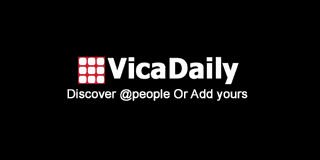Neonatal Ventilator Market Expands Rapidly Amid Rising Preterm Birth Rates and Technological Advancements
The Neonatal Ventilator Market is experiencing accelerated expansion, driven by a confluence of rising preterm birth rates and significant technological advancements. As global healthcare systems focus more closely on neonatal outcomes, the demand for sophisticated, safe, and efficient respiratory support devices for newborns is reaching unprecedented levels. This market is not only growing in size but also evolving in complexity, offering new opportunities for innovation and investment.
Rising Preterm Birth Rates: A Global Healthcare Challenge
Preterm birth—defined as birth before 37 weeks of gestation—is one of the leading causes of neonatal morbidity and mortality worldwide. According to the World Health Organization (WHO), approximately 15 million babies are born prematurely each year, accounting for over 10% of global births. The vast majority of these infants are at risk of respiratory distress due to underdeveloped lungs, necessitating immediate and sustained ventilatory support.
The increasing incidence of preterm deliveries is attributed to multiple factors, including maternal age, lifestyle diseases such as diabetes and hypertension, multiple births from assisted reproductive technologies, and lack of access to prenatal care in certain regions. With survival rates for preterm infants improving globally, the need for effective respiratory management—particularly through neonatal ventilators—is becoming more urgent and widespread.
Evolution of Neonatal Ventilator Technology
In response to these rising demands, neonatal ventilator technologies have undergone remarkable innovation. Traditional ventilators, which once offered basic volume or pressure support, have evolved into sophisticated systems capable of real-time monitoring, adaptive ventilation, and integration with hospital IT infrastructure.
Modern neonatal ventilators now include features such as:
- Non-invasive ventilation modes like nasal Continuous Positive Airway Pressure (nCPAP) and High-Flow Nasal Cannula (HFNC), which minimize the risk of lung injury.
- Volume-targeted ventilation (VTV) to deliver precise tidal volumes.
- Leak compensation algorithms to maintain effective ventilation despite airway leaks common in neonates.
- Synchronization capabilities that align ventilator support with the infant’s natural breathing efforts.
- AI-powered decision support, enabling data-driven adjustments and early warning alerts.
These technologies not only improve clinical outcomes but also enhance safety, comfort, and ease of use for both patients and healthcare providers.
Market Growth and Regional Insights
The global neonatal ventilator market is projected to grow at a compound annual growth rate (CAGR) of 6% to 8% over the next five years, with the market value expected to surpass USD 500 million by 2030. Growth is evident across both developed and developing regions.
- North America and Europe lead in technology adoption due to well-established healthcare infrastructure, strong regulatory frameworks, and high rates of neonatal ICU (NICU) admissions.
- Asia-Pacific, particularly countries like India and China, is witnessing the fastest growth in demand, driven by high preterm birth rates, increasing healthcare expenditure, and expanded access to NICU services.
- Latin America and Africa are emerging as promising markets, with international organizations and government initiatives working to improve neonatal care in underserved regions.
As access to quality healthcare continues to improve, even low-resource settings are seeing increased demand for affordable, durable, and user-friendly neonatal ventilator solutions.
Government Initiatives and Healthcare Policies
Government-backed programs and global health initiatives are playing a pivotal role in market expansion. For instance, the United Nations’ Sustainable Development Goal 3—focused on reducing child mortality—has catalyzed public and private investment in neonatal health technologies. Likewise, national health missions in countries such as India and Brazil are actively deploying ventilators and training NICU staff to address neonatal respiratory complications.
Healthcare reimbursement policies and insurance coverage for neonatal intensive care are also contributing to market growth in many high-income countries. In parallel, public-private partnerships are facilitating the development of cost-effective ventilator models for emerging markets.
Competitive Landscape
The neonatal ventilator market is moderately consolidated, with leading players investing heavily in research and development to gain a competitive edge. Key companies include:
- Medtronic
- Drägerwerk AG
- GE HealthCare
- Vyaire Medical
- Hamilton Medical
- Inspiration Healthcare
- Mindray
These firms are focusing on user-centric innovations, such as touch-screen interfaces, modular designs, and seamless integration with electronic health records (EHRs). Strategic mergers, acquisitions, and partnerships are also common as companies seek to expand their global reach and technological capabilities.
Challenges and Future Outlook
Despite the promising growth, the market does face challenges:
- High costs of advanced ventilators may limit adoption in lower-income hospitals.
- Training gaps among NICU personnel can affect the proper use of complex ventilator systems.
- Regulatory hurdles for AI-integrated and smart ventilators may delay product approvals.
Nevertheless, the outlook remains optimistic. The increasing focus on non-invasive ventilation, AI-based respiratory support, and portable devices is expected to reshape the landscape. Additionally, telemedicine integration and remote ventilator monitoring are likely to become key differentiators in future product development.
Conclusion
The neonatal ventilator market is on a strong growth trajectory, underpinned by a global surge in preterm births and rapid advancements in medical technology. As healthcare providers prioritize safer, more effective respiratory care for newborns, the demand for state-of-the-art ventilator systems will only continue to rise.
With continued innovation, supportive government policies, and increasing healthcare investments across the globe, the neonatal ventilator market is set to play a crucial role in reducing neonatal mortality and improving long-term outcomes for the world’s most vulnerable patients.





